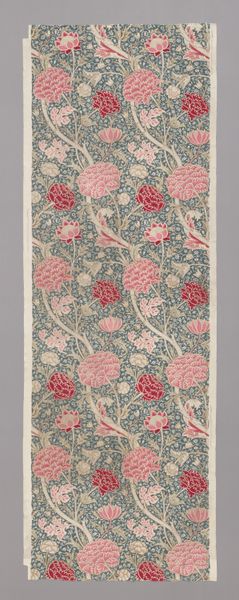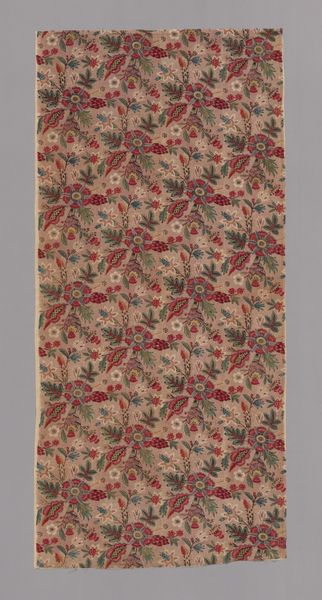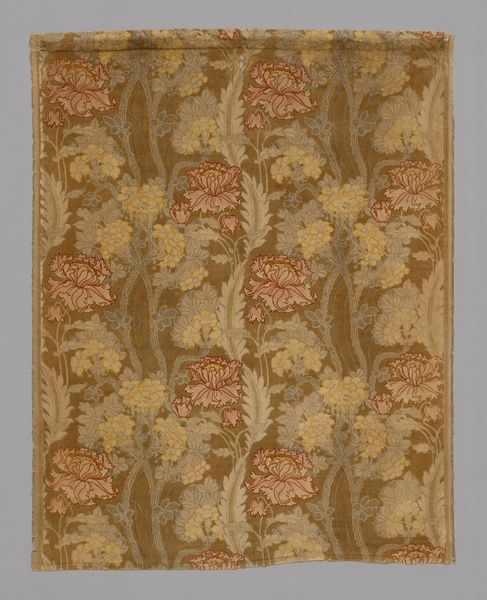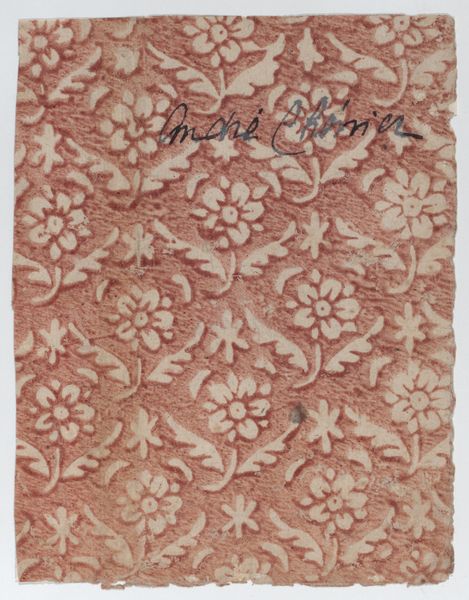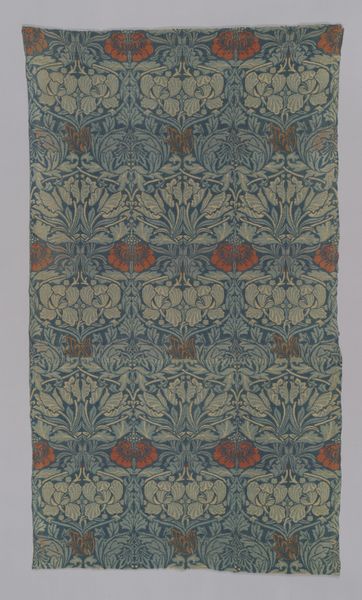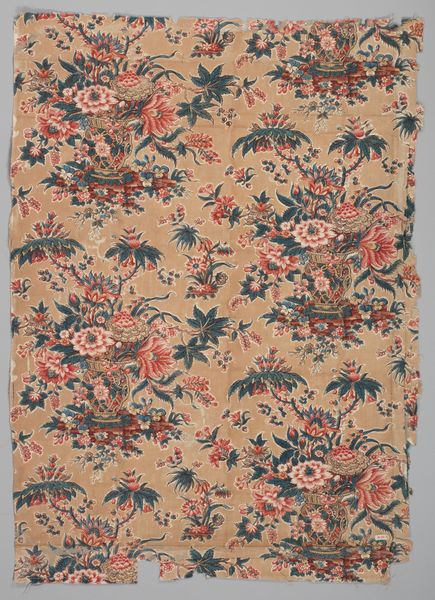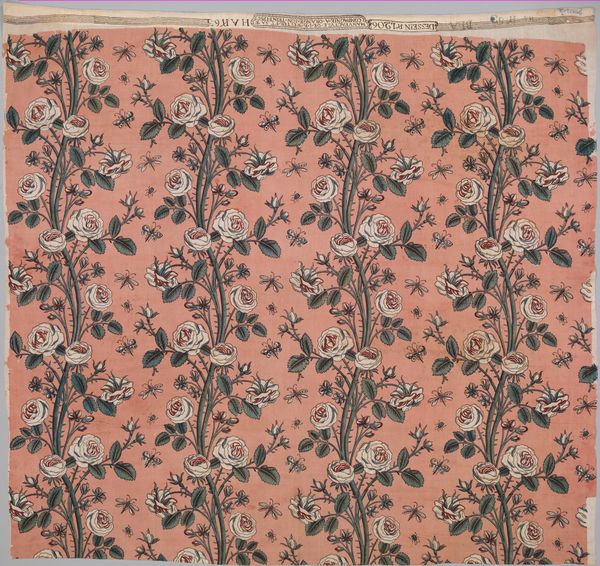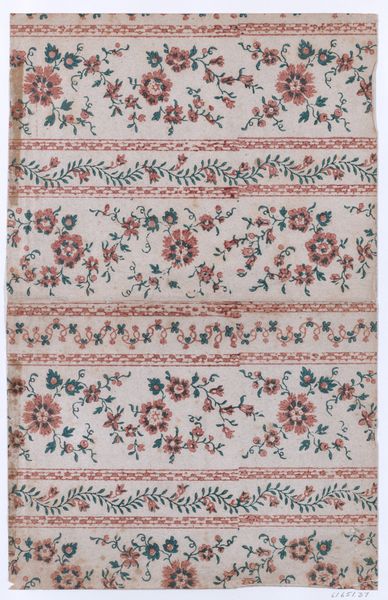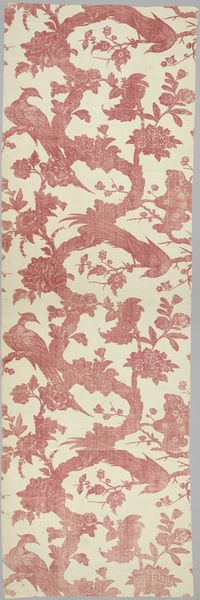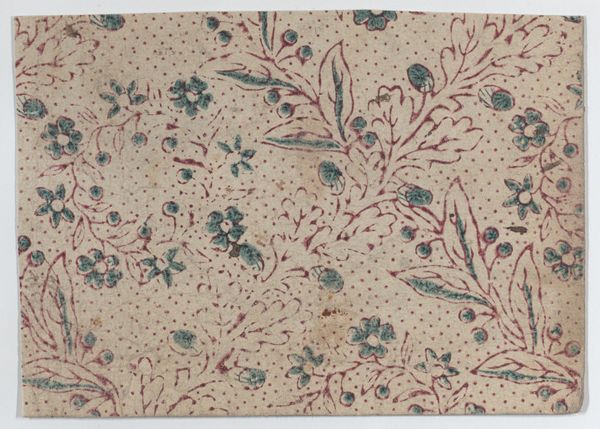
textile
#
arts-&-crafts-movement
#
textile
Dimensions: 94 × 69.5 cm (37 × 27 3/8 in.) Repeat: 59 × 17 cm (23 1/4 × 6 3/4 in.)
Copyright: Public Domain
William Morris designed this cotton furnishing fabric, "Kennett," in England, and while the exact date is unknown, it was probably around 1885. Look closely, and you can see it was block-printed. This laborious process involves carving a design into a wooden block, applying dye, and then pressing the block onto the fabric. Morris championed this traditional craft technique, rejecting the industrial methods that were becoming prevalent in his time. The design features stylized flowers and foliage in muted colors. The flat, two-dimensional patterns are typical of the Arts and Crafts movement, which emphasized handcrafted quality over mass production. Morris believed that beautiful, well-made objects could improve people's lives, offering an antidote to the alienating effects of industrial labor. The choice of natural materials and handcrafted techniques speaks to the Arts and Crafts movement's values of honesty and authenticity. By reviving traditional methods, Morris sought to create a more humane and meaningful way of producing goods, connecting art, labor, and social reform.
Comments
No comments
Be the first to comment and join the conversation on the ultimate creative platform.
